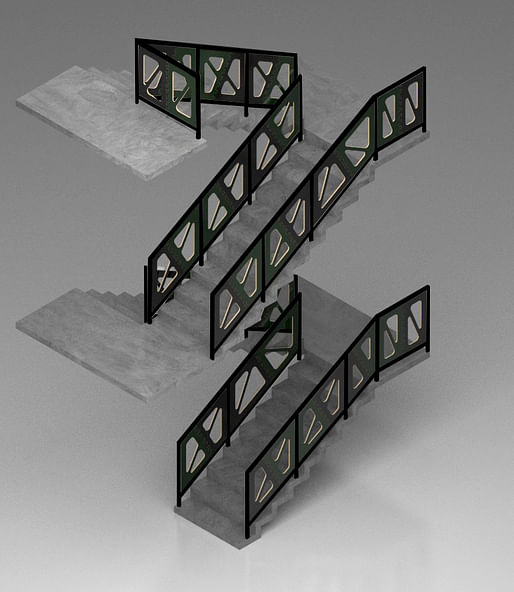
Designed by a Brazilian architecture firm SUBdV Architecture, this Factory and Office Annex in São Paulo, fuses high-tech architectural design strategies with local low-tech construction methodologies.
The façade system references the traditional Brazilian ‘cobogo’ shading screen, which controls the filtration of indirect sunlight through the operable windows on the south and west facades, while also creating a thermal mass which prevents the penetration of hot air in the interior spaces.
Generated through parametric scripts, the various geometric configurations of blocks produce different sized openings and differently-angled light reflection planes, allowing for the optimal combination of both shading and illumination.
The building's double-height ground floor contains a material storage facility, first and second floors are dedicated to administrative office space for the factory and a showroom of the factory's products.
Decorative wall panels, stair guardrails and the furniture for the office were as well designed with parametric computation and conceived to absorb sound of the office's open-plan. Adding color and texture to the industrial monochromatic concrete structure those components were cut using the CNC router, and detailed with CNC milled box-joints, avoiding the use of metal hardware, and creating a playful aesthetic.

The tables were designed with a two-sided arrangement with an embedded channel in the middle for electric cables, and central dividing panels for privacy between users.
"This process of combining ‘high-technology’ methodology (parametric computation and digital fabrication) with ‘low-technology’ construction methods and cheap local materials, (in this case the concrete blocks), can ‘tropicalize’ and give a new and critical Brazilian identity to digital design, to escape the growing ubiquitous and generic quality of the contemporary parametric aesthetic. At the same time, the façade also illustrates another concept that has been studied previously by SUBdV architects: that of ‘environmental ornamentation’, where ornament on a façade is no longer perceived as merely decoration, but becomes a useful element to produce a specific environmental performance, thus creating a new type of ‘functional aesthetic’ for building culture."

"The overall intent of the building was to provide an economical, environmentally sensitive, yet novel design to give a contemporary industrial identity to the factory complex."
1 Comment
smart
Block this user
Are you sure you want to block this user and hide all related comments throughout the site?
Archinect
This is your first comment on Archinect. Your comment will be visible once approved.